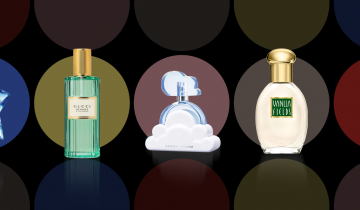Written by Vanessa Barki
Edited by CHIQIO
Key words: fragrance, perfume, history, culture
Creating a unique and captivating perfume requires more than just a blend of scents; it demands inspiration and creativity. Perfumers draw from a wide array of sources to craft fragrances that evoke emotions, memories, and experiences. In this article, we explore various inspiration sources for perfume, shedding light on how these elements come together to create timeless scents.
Nature: The Ultimate Muse
Nature has always been a profound source of inspiration for perfumers. The natural world offers a rich tapestry of scents, from the fresh, crisp smell of pine forests to the delicate aroma of blooming flowers. Many classic perfumes draw inspiration from specific natural elements:
• Floral Gardens: Flowers like roses, jasmine, and lavender are the backbone of many romantic and timeless perfumes. The soft, sweet, and sometimes spicy scents of flowers can create a wide range of olfactory experiences.
• Citrus Groves: The zesty and invigorating notes of oranges, lemons, and bergamots are perfect for creating fresh, uplifting fragrances that are often used in summer or as daytime perfumes.
• Forests and Woods: The earthy and grounding scents of cedarwood, sandalwood, and vetiver bring a sense of calm and stability, often used in more masculine or unisex fragrances.
Cultural and Historical Influences
The rich tapestry of human culture and history provides a deep well of inspiration for perfumers. Ancient civilizations, traditional rituals, and historical events have all left their mark on the world of fragrance:
• Ancient Egypt: The use of myrrh, frankincense, and lotus in ancient Egyptian rituals has inspired many modern perfumes. These ingredients often evoke a sense of mystery and antiquity.
• Oriental Scents: The luxurious and exotic spices from the Middle East, such as saffron and cardamom, provide a rich, opulent fragrance profile that is both warm and inviting.
• European Elegance: The classic and sophisticated scents of French perfumery, utilizing ingredients like lavender, rosemary, and iris, continue to influence contemporary perfumes with their timeless elegance.
Art and Music
Art and music, with their profound emotional impact, serve as excellent sources of inspiration for perfumers:
• Visual Art: The vibrant colors and themes in paintings can be translated into complex scent compositions. For instance, the works of impressionist painters often inspire light, airy, and floral scents that evoke the same sense of whimsy and lightness.
• Music: The mood and rhythm of music, from the structured compositions of classical music to the free-flowing nature of jazz, can influence the creation of perfumes that aim to capture similar emotional essences.
Personal Memories and Emotions
Perfume is deeply personal, and many perfumers draw from their own experiences and memories:
• Childhood Memories: The comforting scent of a grandmother’s garden, the smell of fresh laundry, or the aroma of homemade cookies can all serve as nostalgic inspirations for creating warm, comforting perfumes.
• Emotional Moments: Significant life events, such as weddings, travels, and celebrations, often inspire perfumes that encapsulate the emotions of those moments, creating a scent that tells a personal story.
Travel and Exploration
Exploring new places and cultures can introduce perfumers to unique and exotic scents:
• Tropical Islands: The lush and vibrant smells of coconut, ylang-ylang, and tropical fruits inspire summery and exotic fragrances that transport the wearer to a tropical paradise.
• Urban Landscapes: The dynamic and eclectic aromas of bustling cities, combining notes of coffee, leather, and tobacco, result in bold, modern perfumes that capture the essence of urban life.
Literature and Poetry
The evocative power of words in literature and poetry can be transformed into scent:
• Classic Literature: The romantic and passionate themes in classic novels often inspire perfumes with rich, deep, and complex profiles that evoke a sense of timelessness and depth.
• Modern Poetry: The contemporary and abstract nature of modern poetry can lead to innovative and avant-garde fragrance compositions that challenge traditional scent boundaries.
Conclusion
The art of perfumery is a journey through various sources of inspiration, each contributing to the creation of unique and memorable scents. Whether drawn from nature, culture, personal experiences, or the arts, these inspirations blend together to form the essence of a perfect perfume. Explore these sources and let your creativity flow, crafting fragrances that tell your story.
By understanding and utilizing these diverse inspiration sources, perfumers can continue to create innovative and enchanting scents that resonate with people around the world.

 No products in the cart.
No products in the cart.